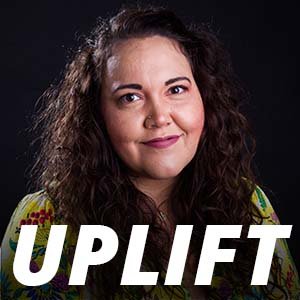
When Kyrra Kematch burned part of her ribbon skirt at a sweat ceremony, she needed a quick solution. The 17-year-old had registered for the Matriarch Summit, a gathering of Indigenous women, girls, two-spirit and gender-diverse individuals, but couldn’t afford to purchase a new skirt.
“I didn’t want to wear it to the Matriarch Summit because it’s a really professional event,” Kematch said. “I found this lady on Facebook who was renting out her ribbon skirts to anyone who needed them, as long as you gave them back.”

JESSICA LEE / WINNIPEG FREE PRESS
Gosselin started making the skirts in March and now has a dozen to lend out.
That lady was Sasha Gosselin, who began lending her collection of handmade ribbon skirts to strangers in the last few months.
Kematch was pleasantly surprised by Gosselin’s kindness and generosity.
“She just hands them out and lets anyone wear them, anytime,” Kematch said. “That’s absolutely wonderful. I love what she’s doing.”

JESSICA LEE / WINNIPEG FREE PRESS
Retailing for prices between $100 and $400, the cost of ribbon skirts can be a significant barrier for some.
Gosselin, who is originally from Treaty 4, only recently began creating ribbon skirts. Originally, she picked up the sewing machine to reconnect with her culture from her dad’s side of the family, but it soon became a catalyst to help others connect, too.
“After wearing my first ribbon skirt and feeling that sense of connection to my culture and the pride of wearing it, I wanted to be able to share that,” Gosselin said. “I started making my own skirts and I decided that I would take a chance and put them out there completely free of charge so that other people would get to experience what I got to.”
At first, Gosselin began informally lending the skirts by spreading the word on different Facebook groups. Recently, she launched a Facebook page called kisêwâtisiwin (“kindness” in Cree) to display her collection.
Retailing between $100-400, the cost of ribbon skirts can be a significant barrier for some, Gosselin said. Amid the grad and powwow season, the ribbon skirt demand has been high for artisans such as April Tawipisim, who owns Winnipeg-based Turtle Woman Indigenous Wear.
“On average, we sell about 10 skirts per week, and there’s been a real high demand for ribbon skirts with grad,” Tawipisim said.
Ribbon skirts are worn during ceremonies to evoke pride and a spiritual connection to the earth. One of Gosselin’s favourite aspects of the process is attaching ribbon drops to the sides of the skirts, which she sees as the “whispering of them going up to Creator, having them long so they’re close to the ground and they touch the earth.
“Our ancestral women wore dresses from cotton skirts and then added ribbons and made it nice and fancy,” Tawipisim said. “As time went by and things evolved, the shorter skirts became more fashionable.”
In just a few months, Gosselin’s ribbon skirts have been worn to a host of special events, from high school graduations to sundance ceremonies. One woman even travelled an eight-hour drive from Norway House Cree Nation to pick up a custom-designed skirt for her graduation.
“You might wear them to any kind of thing where you want that powerful feeling behind you, whether that’s going to a grad ceremony (or) going to something where you’re receiving some type of honour,” Gosselin said. “Just being present and showing that we’re still here.”
Kematch is just one of many Indigenous women who have borrowed Gosselin’s skirts, but she remains touched by her act of kindness.
“The ribbon skirt is really important to me because it’s something I hold near and dear to my heart, and it makes me feel more empowered,” Kematch said. “Out of the kindness of her heart, and for being such a trusting woman, she has let people borrow her skirts and bring them back for events. I just think that’s absolutely beautiful.”
As grad season comes to a close, Gosselin is eager to share her wardrobe with anyone heading to ceremonies. Emulating its Cree namesake for kindness, Gosselin hopes kisêwâtisiwin will help others feel the pride of wearing the threads of one’s culture, regardless of financial situation.
cierra.bettens@freepress.mb.ca






